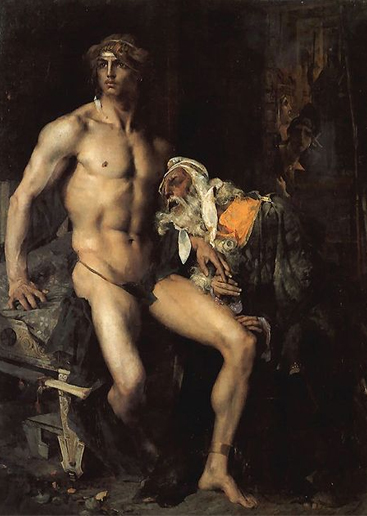The National Gallery's new exhibition, ''Tradition and Revolution in French Art 1700-1880'', might look like a case of thinly disguised curatorial opportunism. The show owes its existence to the temporary closure of the Musee des Beaux-Arts in Lille, whose director had the bright idea of loaning the bulk of his collection of French art to Trafalgar Square while he had the builders and decorators in. The National Gallery, not especially noted for the strength of its collections of French 18th- and 19th-century art, was understandably receptive to the proposal. But whether the contents of a single provincial museum can be said to give a coherent account of the vexed relationship between academic conformism and innovation in French art during a period of nearly 200 years is - notwithstanding this exhibition's impressive title - somewhat debatable.
No museum's collection can be tidied up into anything as logical and lucid as the exposition of an art historian's thesis. But that is not a bad thing, and one of the pleasures of this show is the unevenness of its contents. Unquestioned masterpieces hang beside works of hopeless but fascinating mediocrity. Great but also minor painters wrestle with their own private demons. The exhibition has the lively incoherence, the enjoyable inconsistency of - well, one of those French provincial museums that you might visit while on holiday, during a spare afternoon, more out of curiosity than with any great sense of expectation. And, however unpredictably, it also manages to tell a sort of story (full of hesitations, false starts, intricate subplots) about the development of French art.
One of the incidental lessons of this show is that grand subject matter is no guarantee of artistic achievement. One of the more ambitious paintings in the exhibition, Jules Bastien-Lepage's Achilles and Priam, is perhaps...

The bigger, the worse
30-03-1993

